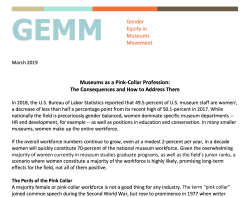Is Your Museum An Idea Factory?
Posted: October 2, 2016 Filed under: Creativity, History Museums, Leading Across Organizations, Museum, Nonprofit Leadership, Organizational Values, Work Habits | Tags: Leadership, museums, nonprofit, workplace culture Leave a comment
Maybe it’s because of where I am in the circle, but lately I’ve spent more time counseling younger people on their career paths. Inevitably, this leads to job interview questions. In a field where there are increasingly more applicants than jobs–at least that’s the way it feels–we’re sometimes so relieved to have beaten our way through the maze of LinkedIn, emailed resumes, Skype, and social media, that actually being with real people makes us forget we’re there to interview the organization, not just answer questions.
But this really isn’t a post about job interviews. I mention them because one of the questions I urge job applicants or anyone new to an organization to ask is how does it solve problems? And equally important is who generates ideas, and how do ideas move from brain storm to concept to implementation? You don’t have to work at Google to realize that if someone can’t answer these questions, you should see little red flags. Why? Because nimble museums (and any organization) know how problems are solved. And staff who participate creatively are usually happy to talk about the process. That does not mean that if you describe a disaster scenario that a particular museum staff will give you the same cohesive answer, but it should mean that everyone appears to understand how the answer, whether temporary or permanent, emerged. Too often, the answer involves “them” as in “they decided” or “they felt,” the mythical group of organizational deciders who make museums change. My advice: beware of organizations where there’s too much “them.”
And what does this have to do with leadership? If you’re a leader, do you want to be part of “them” or “we”? If it’s the latter, then it’s important to consider creativity isn’t all about you, meaning you’re not the fount of the best ideas. Instead, you’re the person who brings your team together. You are the person who models the importance of learning, the generosity of sharing, rather than needing to be right. You welcome heated conversations about ideas because that’s when inspiration happens, and you applaud staff passionate enough to stand up for what they believe in.
Two weeks ago we referenced Christy Coleman’s wonderful post Are History Museums Stuck on Stupid? and we’d like to circle back to it here. Coleman upbraids museum leadership for always looking for the next best thing, the magic potion to cure museum ills, when it’s really right in front of their faces. The same is true of creativity in the workplace. Creative frameworks don’t change museums because process doesn’t change organizations. People do.
Create an atmosphere where all ideas are welcome. If you’re creating new exhibit space, make sure your volunteers, docents and guards are at the table. And by that I don’t mean gathering the frontline staff together for their opinion, I mean inviting them to the big-girl table. After all, they watch and interact with visitors every day. Listen to them. What can they tell you about how visitors behave in your galleries or historic house? If you’re planning an addition, wouldn’t it be smart to have your grounds folks take part in the discussion? They are likely to point out that a tree’s root spread is far larger than what is on the architect’s plans, and that putting the addition in that spot will in fact damage a century-old tree. But the most important thing about listening from the bottom up is that it creates an atmosphere of equity in your organization. Everybody speaks and everybody listens. Disrupters are heard. Push back is important. You are the connector, you learn from your staff.
We all wish there were a next big thing that really worked, a magic formula to turn a sleepy organization into a place that’s sought after. There isn’t. But creating an atmosphere where ideas flourish and everyone’s knowledge is respected is a first step. Does your museum staff know how to work creatively? Here’s some additional reading:
Opening the Museum: The Powerhouse Experience
Creativity and the Role of the Leader
Joan Baldwin









